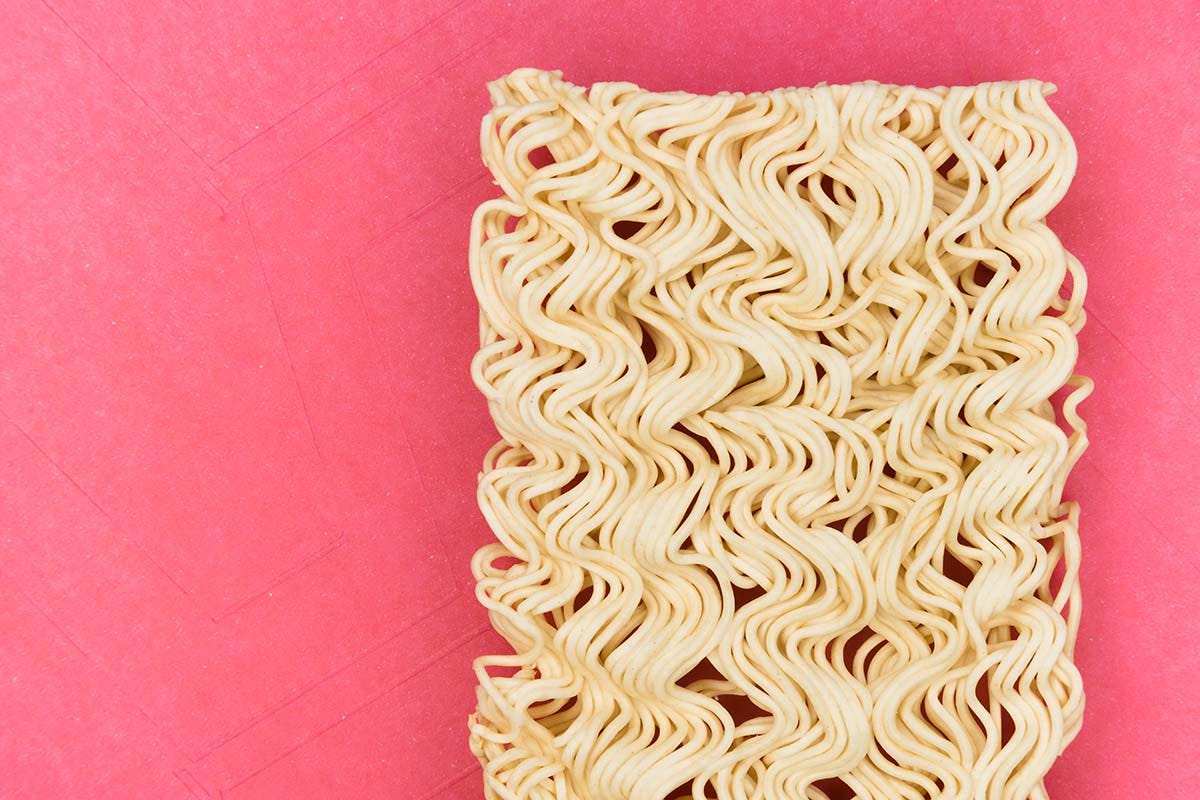Our pantries contain ingredients that comfort and tell stories of who we are. In this installment of What’s In Your Pantry we discuss the innovative homemade fast food called ramen, and an ingredient dubbed sour salt that you may know by a different name.
What’s In Your Pantry – Instant Ramen and Sour Salt
In our third iteration of “What’s in Your Pantry,” Leigh and Kim explore the savory world of salty foodstuffs with a go-to snack for Generation X latchkey kids and a surprisingly familiar traditional favorite.
A Rice Shortage leads to Instant Ramen
A rice shortage after WWII, combined with a glut of American wheat to combat food shortages, made the chewy, wavy noodles popular, but it wasn’t until the 1950s that ramen was commercially produced as an instant (just add hot water!) food. After a trip to the United States, Nissin Foods founder Momofuko Ando realized that the world was hungry for a savory, easy snack and soon Top Ramen and Cup Noodles hit the global market. More than 80 billion servings of instant ramen are sold around the world.
What is Sour Salt
After a recommendation from our friend Holly, Leigh takes a tasty trip to find the history of sour salt, a hard-to-find companion to dishes – like borscht – that benefit from a sweet & sour flavor profile. This tasty combination is found generously in Ashkenazi and other Jewish cuisine with sweet flavors – such as found in beetroot – paired with sour notes, such as beet vinegar. As people of Jewish faith migrated around the world, new ways to flavor foods were found and fermented beet juice gave way to sour salt.
Much to our surprise, sour salt goes by a less romantic name – citric acid! First identified in the 8th Century by Arabic chemist Jabir Ibn Hayyan, citric acids were later chemically isolated from fruits like lemons and limes by Swedish chemist Carl Wilhem Scheel in the 1700s and industrially produced a mere century later. Beyond adding a sour highlight to balance sweet foods, sour salt/citric acid has many other culinary and at home uses including making ricotta and paneer cheeses or adding a kick of flavor on the rim of a margarita glass.
We want to know what you have in your pantry that you are curious about!
What’s In Your Pantry Transcript
🎧 Click here for the full, interactive transcript of this episode 🎧
Sources We Found Helpful for this Episode
Food 101, What’s In a Name, Washington Post
Books We Think You’ll Enjoy Reading
Recipes You Really Need to Try
6 Ways to Upgrade Instant Ramen – Budget Bytes
TikTok Ramen – i am a food blog
Ramen Noodle Salad – Dinner at the Zoo
Episodes We Think You’ll Like
We would love to connect with you
AsWeEat.com, on Instagram @asweeat, join our new As We Eat community on Facebook, or subscribe to the As We Eat Journal.
Do you have a great idea 💡 for a show topic, a recipe 🥘 that you want to share, or just say “hi”👋🏻? Send us an email at connect@asweeat.com
Review As We Eat on Podchaser or Apple Podcast. We would like to know what you think.
And please subscribe to As We Eat, Going Places. Eric and Leigh will be traveling in their converted van sharing stories of food culture from the road.
We would love it if you would consider becoming a supporting subscriber. For just a few dollars, you can get access to exclusive content including our Recipe Box Roulette “card” game, more in-depth articles, more recipes and you’ll help keep our oven lights on!
Thank you for listening to the As We Eat Podcast. This post is public so share it with a friend - or three :)


























What’s in Your Pantry